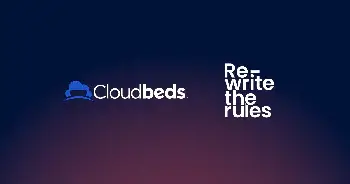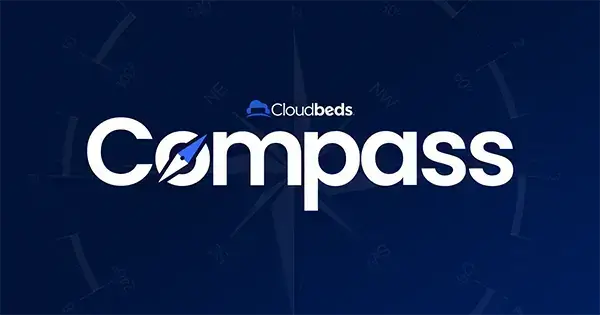The year of chasing demand
Cloudbeds is honored to serve hoteliers, who we believe are the heroes of hospitality. Over the last few years, we’ve seen their needs shift as they navigated the pandemic and pushed toward full recovery amid rising costs and inflation in 2023.
This year, we expect advanced technologies to usher in a shift in how owners, operators, and hoteliers do business as they chase demand. Unplanned overbookings, front desks staffed 24/7, and marketing or finance degrees to optimize revenue are a thing of the past. Siloed and disparate legacy systems are too. We’ll be a partner in saying goodbye to the old rules of hospitality by providing best-of-class technology, education, and support to rewrite new ones.
As part of that education and support, we’ve compiled data from across the globe to deliver critical insights on lodging businesses to support strategic decision-making. In this comprehensive State of Independent Lodging annual report, you’ll find key data on traveler booking behavior and which trends are shaping the travel landscape as we know it. We hope this information empowers you to chase demand and elevate your business.
Let’s rewrite the rules for great hospitality, together.
Adam + Rich
Founders, Cloudbeds
2024: The year of chasing demand
In the second annual State of Independent Lodging Report, the Cloudbeds team draws from a trove of data, research, and daily interactions with independent hoteliers around the world to share insights and trends in travel for 2024.If the past few tumultuous years have taught us anything, it’s that change is the only constant. No sooner had hotels begun to recover from the pandemic than they were hit with a labor crisis and rampant inflation. While these challenges began to ease in 2023, they continue to serve as impediments to growth and profitability today. Meanwhile, growth in travel has slowed down, in part due to a softening in the leisure segment, which has bolstered hotel performance since the pandemic.
Nevertheless, the outlook for the travel industry in 2024 looks encouraging. Economic forecasts have shifted from fears of a global recession to expectations of a soft landing and moderate growth. Recovery in international, business, and group travel is gaining momentum. Despite higher prices, consumers have demonstrated a determination to travel and a desire for the distinctive experiences only independent hotels can provide.
How will the year ultimately roll out? While the data provides us with strong signals, many unknowns remain. For independent hoteliers, 2024 will be the year of chasing demand. This means monitoring market trends and travel patterns closely to determine who is traveling and how best to capture the business and finding new approaches to overcoming challenges, old and new.
In the first section, we share booking data from thousands of independent properties around the world to help you benchmark performance against industry peers. And in the second section, we explore six trends shaping the travel landscape, along with strategies for adapting to the trends and ensuring long-term growth.
At Cloudbeds, it’s our goal to provide the technology and the know-how independent lodging businesses need to compete with hotel brands for more reservations and happier guests. We believe that with the right technology, operating an independent property is not only easier, it’s the smarter choice. After all, amazing hospitality isn’t just the domain of the big brands. In fact, we think it’s best served by independent properties. And we’re here to help.
The Data
Traveler booking behavior and insights
In the lodging industry, data reporting often lumps all types of accommodation together and is heavily weighted toward the big brands that dominate the sector. This makes it difficult for owners and operators of independent properties to compare performance to similar properties and identify travel patterns relevant to their sector.In this section, we share data exclusively from independent properties, representing everything from boutique hotels and guest houses to B&Bs and hotel groups. Drawing from a data set of 10,000+ properties, we track key performance metrics over the five-year period from 2019 through 2023. Properties are dispersed across 100+ countries and divided into four regions: North America, Latin America (including Mexico), Europe, and Asia Pacific.
The following metrics provide macro-level views of how travel behavior has evolved for independent hotels and where the sector appears to be heading. At the property level, they reveal valuable clues about what it will take to grow market share and boost profitability in 2024.
Occupancy: Back to the future
2023 was the first full year global occupancy for independent hotels fully recovered from the pandemic, with rates closely following 2019. There were early indications of a return to normal starting in April 2022, when occupancy finally caught up to pre-pandemic levels, and this trend has sustained itself throughout 2023, marking a full year of “normalcy.”While some cities experienced record occupancy rates in 2023 due to concert tourism or TikTok fame, overall travel demand remained stable, a reassuring sign for lodging businesses. Looking ahead to 2024, occupancy patterns are expected to remain consistent. With demand relatively flat, hotels will need to focus efforts on growing market share and RevPAR.
Average daily rate (ADR): An inflation hedge
Average daily rate has been a key driver of hotel performance since the pandemic. In 2023, independent hotels achieved an ADR index of 120 relative to 2019, meaning that rates were 20% higher on average. For some hotels, strong rate growth combined with stable occupancy enabled record room revenues.However, the picture isn’t quite as rosy when room rates are adjusted for inflation. Globally, inflation peaked at 8.7% in 2022 and then declined slightly to 6.9% in 2023. As a result, growth in operating expenses outpaced growth in revenue for many hotels in 2023. In the U.S., for example, labor costs were an additional 7.5% per occupied room compared to 2022.
This year, global inflation is forecasted to decline further but remain relatively high, at 5.8%, although it should come closer to normalization in developed countries. This poses a big question for hoteliers: How much higher can pricing be pushed to offset rising costs? In the U.S., CBRE projects hotel ADR to increase by only 2.3%.
With travelers expected to be more price-sensitive this year, hoteliers will need to find additional ways to boost the bottom line while still upholding quality standards and value perception. Yet many hotels are already operating on a leaner staffing model and reduced housekeeping services. Potential areas for reducing costs and increasing pricing may be found in food & beverage services, parking, ancillary fees, and non-refundable rates.
Global ADR, indexed to 2019
Revenue per available room (RevPAR): Room for growth
Revenue per available room is an important performance metric because it indicates how well hotels balance the need to fill rooms with the desire for a high average rate. Globally, in 2023 independent hotels achieved a RevPAR index of 120 relative to 2019. This is consistent with the ADR index, demonstrating the power of holding rates steady even when demand softens.While 2020 is an outlier due to the pandemic, the pattern of steady RevPAR growth since then bodes well for hotels in 2024. Provided occupancy grows moderately and hotels can maintain or increase average rate through selective discounting and shrewd yielding of room inventory, there is room for additional growth in RevPAR. Moreover, if inflation continues to moderate and costs are well contained, hotels will be well-positioned to increase profitability.
Global RevPAR, indexed to 2019
Booking source: OTAs are stronger than ever
During the pandemic, travelers’ desire to stay closer to home and have the flexibility to cancel if needed led to a significant shift from online travel agency (OTA) bookings to direct bookings via hotel websites, the telephone, email, and walk-ins. As a result, in 2020 global direct booking volume surpassed OTA booking volume.Since then, however, we’ve seen OTAs return stronger than ever, a trend identified in Cloudbeds’ 2024 Big Book of OTAs. In 2023, OTAs generated 60% of global bookings, a higher proportion than in any of the previous three years and much higher than the 40% of bookings generated on direct channels. Nowhere was the trend more prominent than in Europe, where OTAs accounted for 76% of total bookings. At 64%, Asia Pacific followed Europe. By comparison, in North America, the OTA share was 48% – the only region where direct booking volume surpassed OTA booking volume.
The domination of OTAs solidifies the importance of a diverse distribution strategy for maximizing online visibility and bookings. As reported in the Big Book of OTAs, independent hoteliers see optimal results through a strategic mix of six OTA connections across global, regional, and niche channels.
Not only will a diverse channel mix lead to more OTA bookings, but it will also help generate direct bookings via the billboard effect, with visitors leaving OTAs to visit a hotel’s website. To convert this traffic into direct bookings, properties must have a search-optimized and mobile-friendly website, along with clear images and descriptions and an integrated booking engine. Investments in metasearch advertising and business listings optimization will also help travelers find hotels when searching for them online after being exposed on OTAs.
Global percentage of total bookings by booking source, OTA vs. Non-OTA
Percentage of total bookings by booking source and region, 2023
Additional Data
Download the full report to see data for the following travel booking behavior and insights:
Booking window
The booking window is the average number of days travelers book trips in advance of the arrival date. Generally, the longer the booking window the better for the property. When lodging businesses have advanced notice of how busy they will be, they can more effectively manage pricing and operational planning.Length of stay
Length of stay (LOS) is the average number of nights guests stay at a property. Generally, properties strive to attract guests for longer stays in order to boost occupancy and lower operating costs. However, long-stay guests often expect lower rates, which can drive down ADR.
Check-in / Check-out trends
Here we look at arrival and departure patterns. On what days do travelers check in and check out most often? By understanding these patterns, hotels can manage pricing and inventory controls to distribute bookings more evenly throughout the week and flatten out peaks and valleys in occupancy.

















